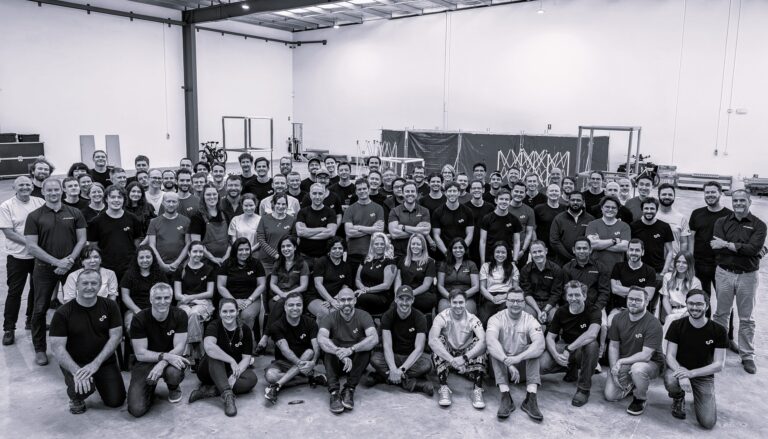Rapid 3D Scanning of an Architectural Icon – South Africa’s The Beacon Isle Hotel
Emesent CEO and co-founder Dr Stefan Hrabar accurately captures the distinct beauty of a popular tourist destination via quick scans with Hovermap ST-X.
Story and images by Dr Stefan Hrabar
I grew up in the small town of Plettenberg Bay (a.k.a. Plett), located in the beautiful coastal region of South Africa known as The Garden Route. Plett is a popular holiday destination for local and international travelers, offering unspoiled beaches and many outdoor adventure activities in the surrounding areas.
On a recent trip home to visit family, I had a Hovermap ST-X with me and decided to scan something iconic in my former hometown. The obvious choice was the Beacon Isle Hotel (or B.I. Hotel), located on a natural rocky outcrop between two of the popular beaches. I knew it would be a fantastic structure to scan, not only because of the location, but also because of the interesting design.
The hotel was first opened in 1972, celebrating its 50th anniversary last year. It was built on the site of an older single-story hotel that was opened in 1940. Prior to this, a few other structures stood on the site, including a whaling station from 1908 – 1916.

Left to right: The Beacon Isle Hotel in Plettenberg Bay, South Africa, Point cloud image of the Beacon Isle Hotel
Despite its age, the current hotel remains remarkably contemporary because of the design. It features a large multi-story atrium, and the entire structure is supported by four large arches. The ocean-facing side of the building is cantilevered out over the rocks, with the sea directly below. This provides spectacular views of the ocean and is a great location for whale spotting during the winter months. The breathtaking external views are matched by the interesting internal views of the atrium. It’s reminiscent of the spiraling interior of the Guggenheim Museum in New York (although the hotel has discrete levels, not a spiral).

Left to right: Interior atrium of the Beacon Isle Hotel, Walking path (colored line) for the first scan overlaid on the point cloud (with half of the hotel cropped to show the interior)
I have fond memories of visiting the hotel for special occasions as a child, dining in the ‘Captain’s Cabin’ restaurant which overhangs the ocean, or swimming and snorkeling off the rocks and beaches below. It was a pleasure to return to the hotel after many years, and I was excited to capture this iconic structure with Hovermap, bringing together part of my past with my present.
I captured the scan by walking outside and inside the building, carrying Hovermap by hand. This was done in four parts. The first scan took 45 mins and I walked through all the areas that were publicly accessible, including the exterior and most of the interior (see colored line showing the walking path taken in the image below). The next day I was then given access to some areas that were missed, including the roof and kitchen area. The additional three scans took 25 mins, bringing the total scan time to one hour and fifteen minutes. This certainly could have been shorter if I was focusing on speed, but I was enjoying the views as I went.
Usually, Hovermap would be flown on a drone to provide better coverage of tall buildings, but I didn’t have access to a drone. The Hovermap ST-X’s 300m scanning range really helped to capture the exterior of the building even when I was walking at ground level though.

Left to right: Mapping the hotel interior, Mapping the hotel exterior
After capturing the data I processed the scans in Emesent’s Aura application to generate the point clouds, and merged the two scans using Aura’s slam-based merge function. The animation and images below show the final results.

Left to right: Point cloud image of hotel, Point cloud image – cross-section through hotel, Point cloud image – looking down through the atrium

How could this be used? Admittedly, while this was not captured for a specific use case (other than to scan an interesting structure), this type of data is typically used to generate up-to-date plans of buildings or structures. It can be used during construction to monitor progress and validate the construction is progressing according to plan, or to plan alterations to the structure. This usually involves a scan-to-BIM workflow to convert the point cloud to a CAD model. Some of the benefits over traditional tripod-based scanners include the ease of use, speed of capture, and completeness of coverage. For examples of this workflow see this webinar: Better Data and Greater Insights for AEC.
If you’d like to see Hovermap in action, feel free to Book a Demo. Or check out other applications in the engineering and construction, mining, or public safety fields.
